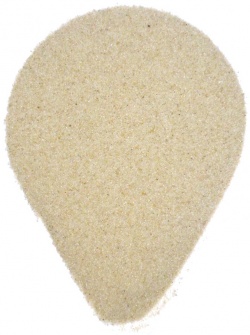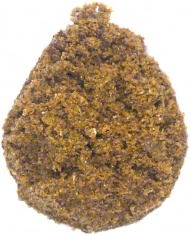Difference between revisions of "Sand"
(→See Also: minor) |
(→Sharp Sand: pic) |
||
| Line 24: | Line 24: | ||
===Sharp Sand=== | ===Sharp Sand=== | ||
| + | [[image:Sharp sand 5444-2.jpg|right|190px]] | ||
| + | |||
* sharper particle shape than builder's sand | * sharper particle shape than builder's sand | ||
* contains larger particles too | * contains larger particles too | ||
| − | |||
===Kiln Dried Sand=== | ===Kiln Dried Sand=== | ||
Revision as of 15:40, 18 March 2012
This article needs expert input.
Sand may be the most widely used building material of all.
Sand is mainly tiny particles of stone, usually with some clay & shell too. It comes in different varieties, each one better for certain tasks. normally another sand type can be used instead if necessary.
Types of Sand
Sharp sand & builder's sand are the most popular sands. Both are used for brickwork and bedding paving. Cue argument about what should be used for what...
Sand has a density of apx 2.2kg per litre.
Builder's Sand
- General purpose building sand
- much less pointed grain shape than sharp sand
- dredged from the sea bed
- contains a little clay
- tends to contain salt
- Red sand with lime can produce a light pink mortar (gently brushing the surface when 'green' (softly set) exposes more of the red sand)
Sharp Sand
- sharper particle shape than builder's sand
- contains larger particles too
Kiln Dried Sand
- aka Jointing sand
- Minimal clay content for good stability
- Dried sand flows well with no stickiness
- Used for filling block paving joints
Silver Sand
- Fine sand
- Used in final plaster coat
- Light iron-free colour
Colours
Sand used for DIY is red, yellow or near white. Choosing different colours can affect the final appearance with light coloured mortar mixes such as lime mortar, which is near white.
Other sand colours also exist, such as green, black, white, orange. Black sand is available sold as a sand blasting medium. Its ground low silica slag.
Uses
Concrete
Mortar
Plaster
Paving
Sand forms the base of a lot of block paving & slab paving. It needs to be compacted to form a stable base, preferably with a whacker plate. Sharp sand is preferred as the particles lock together more than builder's sand.
Water flowing through sand can erode it over time, even if the sand is compacted and weighted. If this is liable to be a problem, water erosion can be prevented by a minimum cement addition of 1:12 by volume.
Well dried sand is easier to use to fill paving joints, damp sand resists falling down the joints.
Sandpits
For kids' sandpits choose clay free yellow or white sand to avoid staining. Some stores sell play sand.
Soil Amendment
Sand is added to clay soil for greater drainage, and to help break up clay lumps.
Sandblasting
Sand is the cheapest abrasive for blasting. Its downsides are that it only works well blasted once, and some sand releases fine silica dust into the air when blasted, which can cause a lung health issue if used day in day out.
Its also possible to sandblast using a pressure washer. This is sometimes done when no more suitable equipment is available.
Sandbags
Sandbags are primarily used for flood protection. They're also used for building in some countries.
Other uses
- Cob
- Textured paint
- Sprinkling on ice to give grip
- Metal casting
- Water filtration
- As a filler in resins, fillers etc. The result is not sandable.
Suppliers
Nearly all building material stockists sell sand. It can also be obtained from
- garden centres
- ...
See also Suppliers
Alternatives
Occasionally alternatives to sand are used, such as stone waste or crushed glass. See Mortar Mixes for more.

